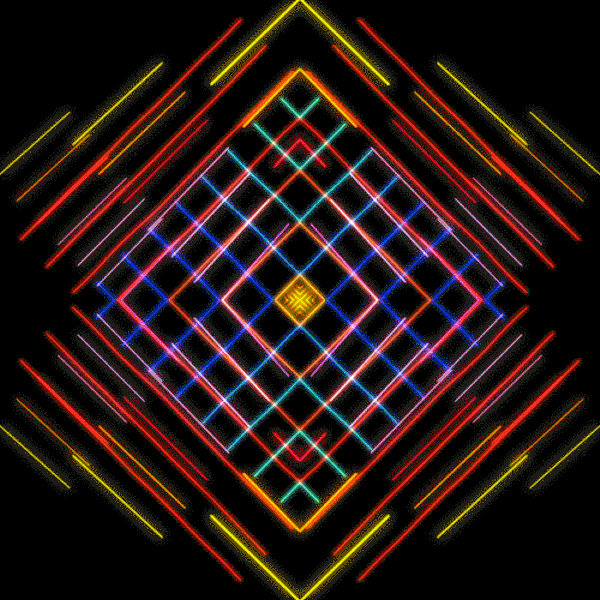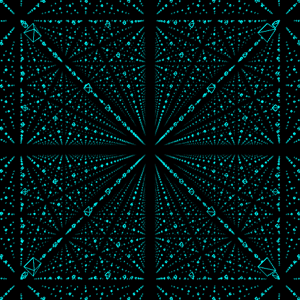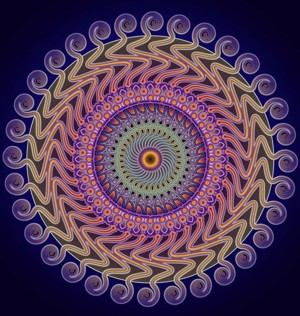|
|
TALISMANS | HORARY | READINGS | COURSES | BOOKS | CDs | SOFTWARE | PAYMENT | CONTACT | SEARCH |

|
| Christopher Warnock, Esq. |
| HOME |
|
|

|
Axioms of Magic
Introduction

|
|
Because there are an infinite number of ways to perceive the world, there are an infinite number of worlds we may assemble with our awareness. The true underlying reality is unknowable to us as long as we retain the world view of separateness and self. You can become one with the universe but you cannot step back and observe it, because you are in it. You cannot observe a phenomenon without altering it by your mode of perception. There is no such thing as an independent observer. You participate in creating the world by perceiving it.
The more evidence one looks for to support a given law, conclusion, or world view the more one will find. World views have inertia. Since we create our world each moment (as discussed above in the Law of World Views), we are constantly maintaining our world view. This is done by means of a recursive internal dialogue of words and symbols with which we constantly edit our perceptions. By rearranging our attention, we rearrange our world view. To quote Lewis Carroll, "What I tell you three times is true."
Synchronicity is a term invented by Dr. Carl Jung to describe meaningful coincidences that cannot be described by the law of cause and effect. They are events connected by pattern (meaning) rather than time. (See IX. Law of Association.) Some interpret this as a developing and ongoing dialogue between the perceiver and the consciousness of the universe. This dialogue is overt to the degree the perceiver is receptive to (or aware of) it.
Every statement is true in one sense, false in one sense and meaningless in one sense. This is a function of one's vantage point (world view). In the words of Hassan Ibn Sabbah, "Nothing is true. Everything is permissible."
If it works, it is true. A world view is only valid if it enables its perceivers to accomplish their goals. The more successful a world view is in fulfilling the goal structure that its viewers possess, the more valid it could be said to be. By this definition, few people could be said to be completely insane. However, few people could be said be completely sane, either.
No world view may encompass the whole world. Two models (or "laws") may conflict with each other and still be true in their proper context. Two people may experience the same event yet perceive entirely different occurrences. Rationality is limited by the intellect, the world is not. The world is not bound by the confines of our world views. The trick is to switch from one model to another as it becomes appropriate. (See V. Law of Pragmatism.)
Everything (through all space and time) is linked, either directly or indirectly, to everything else. (See Law of Contagion within IX. Law of Association.)
The microcosm is the macrocosm. The part contains the whole. As above, so below. This is one of the most common and widely applicable axioms of magic, reputedly first written on the fabled "Emerald Tablet" of Hermes Trismegistus:
Truly, without lies, certainly, and most definitely, that which is Below is like that which is Above, and that which is Above is like that which is Below, for the accomplishment of the miracle of one thing. And just as all things have come from One, through the mediation of One, so all things have been derived from this one thing, by Analogy. Its Father is the Sun; its Mother is the Moon. The Wind has carried it in its belly. Its nourishment is the Earth. It is the Father of every completed thing in the whole world. Its strength is intact if turned towards the Earth. Separate the Earth from Fire, the Fine from the Gross, gently and very carefully.Every speck contains the image (or pattern) of the entire universe in the same way that a fragment of laser holograph still contains the entire original image. Each person contains this cosmic image. When the inner image is tuned (brought into resonance) with the outer image, a change in one will be simultaneous with a change in the other. To perceive one is to perceive the other. This is the basis of mantic systems such as the I Ching or tarot cards. It is also one reason why you could say humanity is created in God's image. The universe is within us and without us.
If two things, (A) and (B), have something in common, that thing can be used to influence both. Also, (A) and (B) have a mutual influence on each other. The more they have in common, the more influence they exert upon one another. The Law of Association may be broken into two sublaws:
The cause and the effect resemble (have resonance) with one another. A ritual to cause a rainstorm might involve dripping water onto the ground. A ritual to fly might involve wearing feathers and chirping like a bird, etc. This is "sympathetic magic."
Things once in contact continue to interact after separation. Anything once in contact with a substance, person, or object maybe used as a "witness" for that substance, person, or object. A good example would be the traditional use of hair or nail clippings attached to a voodoo doll. A witness could be thought of like a tuning crystal in a radio. In any case, power is contagious. (See VII. Law of Unity.) This is "homeopathic magic."

|
|
Any two opposing forces or concepts maybe unified in a force or concept which will contain both the original opposites.
Any concept or force may be divided into two totally opposite concepts or forces, each of which contains the essence of the other. Opposites can be defined only in relation to each other.
Any concept, force, object, or phenomena maybe considered to be alive, to have a personality, to be an entity.
Law of Invocation and Evocation
Any concepts, forces, or objects which manifest as entities can and should be treated as real beings. These beings (patterns) can also be viewed as objectified aspects of ourselves, but it is useless (perhaps even dangerous) to take this attitude while actually dealing with them. Do not be fooled just because something is only the personification of a pattern of energies. You can be described this way, too.
Power exists in the interfaces of things. These are the between places that are not entirely one thing or another. (See IX. Law of Association.) Traditionally, these places include caves, grottoes, towers, mountains, beaches, wells, crossroads, and cliffs.
All the chief times of change of the day are considered to be powerful. These are dawn, noon, twilight (sunset), and midnight. Likewise, the solstices and equinoxes, the pivots of the year, have always been thought very important. There is a medieval legend that if a woman wished to become a witch she need only remove her clothes and stand between the high- and low-tide marks at the seashore.
There are words (symbols) that are able to change the inner and/or outer realities of those using/perceiving them. These words (symbols) do not necessarily need to be consciously understood by those using/perceiving them in order to have their effect. One view is that these words or symbols have accumulated power through use (attention) over thousands of years. Others would say that there is an intrinsic primordial connection (resonance) between these words (symbols) and the forces or concepts they represent that goes beyond human design. Many people believe this about Sanskrit, claiming that it is the original root language of humanity.
In magical symbol systems, a name is the thing named. This is to say that, in some way, there is an analogical correspondence between the name and the thing named. There is a connection created by shared structure. To know the true name of a person, place, or thing is to have complete control over it. Of course, you could never command something to do anything which was not in its nature. To know a thing's true name is to know its nature. What most people consider to be a name is really (in the magical sense) only a label.

|
|
When you symbolize something, you impose the deep structure of the symbol system used on the way you perceive the thing symbolized. There is a Japanese proverb which relates that to confusing the Moon with the finger pointing to the Moon. People tend to believe that they understand something when they have a name for it. This is called nominalization. It enables people to take very ill-defined concepts and continuing processes and talk about them as if they were concrete things. The problem is that frequently even the users of these terms (names) do not know what they mean.
|
OBJECTIVE |
SUBJECTIVE |
|
I need water |
I need love |
|
This book is green |
This book is spiritual |
|
I am a mammal |
I am an illuminated being. |
Nominalization is an important tool. However, we must realize when we are using it.
The more information contained in a symbol, the more general (vague) it becomes. The more specific a symbol system is, the more information it excludes.
Information can be viewed as a measure of the unpredictability of a message. The more unpredictable a message is, the more information it contains. In systems, the most probable state is rest (dispersion of available energy). Since systems tend towards entropy, the least probable state is that of potential work. Thus, we can think of the degree of order in a system as the amount of energy in it.
The more information you have, the less energy you need. Some people have defined life as negative entropy because it evolves; i.e., develops greater and greater complexities of pattern. In this sense, the universe becomes more intelligent every day.
Any pattern of sufficient complexity will act intelligent when treated as an entity. A pattern more complex than ourselves could be said to be more intelligent than we are. Keep in mind that the human brain is still far more complex than the most advanced computer yet built.

HOME
Please Contact me for assistance with ordering readings, talismans or other products or registering for courses.
Specializing in Horary Astrology, Electional Astrology Astrological Magic and Astrological Talismans.






